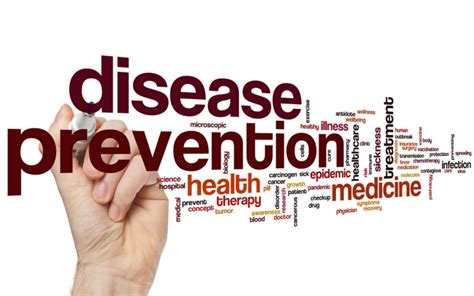Intro
Treat blisters effectively with 5 proven methods, including prevention techniques, home remedies, and wound care tips to reduce friction, ease pain, and promote healing for foot, toe, and heel blisters.
Blisters are a common problem that can be painful and frustrating, especially for individuals who engage in activities that involve repetitive friction, such as hiking, running, or dancing. These fluid-filled bubbles can appear on various parts of the body, including the feet, hands, and toes, causing discomfort and affecting daily activities. Understanding the importance of treating blisters effectively is crucial to promote healing, prevent infection, and reduce the risk of further complications. In this article, we will delve into the world of blisters, exploring their causes, symptoms, and most importantly, ways to treat them.
The formation of blisters is a natural response of the body to protect the skin from further damage. When the skin is subjected to friction, heat, or other forms of irritation, it can cause the outer layer to separate from the inner layer, leading to the accumulation of fluid. While blisters can be painful, they are generally not a cause for concern and can be treated with simple remedies. However, if left untreated, blisters can become infected, leading to more serious problems. Therefore, it is essential to take proactive steps to treat blisters as soon as they appear.
Treating blisters requires a combination of self-care, protective measures, and in some cases, medical intervention. The goal of treatment is to promote healing, reduce pain and discomfort, and prevent infection. With the right approach, individuals can manage blisters effectively, reducing the risk of complications and promoting overall skin health. In the following sections, we will explore five ways to treat blisters, providing a comprehensive guide for individuals seeking to manage this common skin problem.
Understanding Blisters

Causes of Blisters
Blisters can be caused by a range of factors, including: * Friction: repetitive rubbing or pressure on the skin * Burns: exposure to heat, flames, or other sources of thermal energy * Skin conditions: eczema, psoriasis, and other skin disorders * Infections: bacterial, viral, or fungal infections * Allergic reactions: allergic responses to substances such as latex or certain metalsTreatment Options

1. Keep the Blister Clean and Dry
Keeping the blister clean and dry is essential to promote healing and prevent infection. Individuals should wash the affected area with mild soap and water, avoiding harsh or abrasive cleansers. After cleaning, the area should be dried thoroughly, paying extra attention to the blister itself.2. Apply a Protective Covering
Applying a protective covering, such as a bandage or dressing, can help to cushion the blister and reduce friction. This can be especially helpful for individuals who engage in activities that involve repetitive motion, such as running or hiking. The covering should be secure but not too tight, allowing for proper airflow and promoting healing.3. Use Moisturizing Creams or Gels
Applying moisturizing creams or gels can help to promote healing and reduce discomfort. These products can be especially helpful for individuals with dry or cracked skin, as they can help to lock in moisture and promote skin health.4. Avoid Popping the Blister
While it may be tempting to pop a blister, this can lead to infection and prolong the healing process. Instead, individuals should allow the blister to heal on its own, avoiding any actions that could cause further irritation.5. Seek Medical Attention if Necessary
In some cases, medical attention may be necessary to treat a blister. If the blister becomes infected, is large or painful, or does not heal on its own, individuals should seek medical attention. A healthcare professional can provide guidance on the best course of treatment, which may include antibiotics, drainage, or other interventions.Prevention Strategies

- Wear properly fitting shoes and clothing
- Use moisturizing creams or gels to keep the skin hydrated
- Avoid repetitive friction or pressure on the skin
- Wear protective coverings, such as gloves or socks, when engaging in activities that involve repetitive motion
- Take regular breaks to rest and stretch
Common Mistakes to Avoid
When treating blisters, there are several common mistakes to avoid. These include: * Popping the blister, which can lead to infection and prolong the healing process * Using harsh or abrasive cleansers, which can irritate the skin and slow healing * Failing to keep the blister clean and dry, which can lead to infection * Not seeking medical attention if the blister becomes infected or does not heal on its ownConclusion and Next Steps

We hope that this article has provided you with valuable information and insights on how to treat blisters. If you have any questions or comments, please do not hesitate to reach out. Share this article with your friends and family to help them manage blisters effectively. Take the first step towards promoting skin health and reducing the risk of complications by trying out these treatment options today.
What are the most common causes of blisters?
+Blisters can be caused by a range of factors, including friction, burns, skin conditions, infections, and allergic reactions.
How can I prevent blisters from forming?
+Preventing blisters involves wearing properly fitting shoes and clothing, using moisturizing creams or gels, avoiding repetitive friction or pressure on the skin, and taking regular breaks to rest and stretch.
What are the symptoms of an infected blister?
+The symptoms of an infected blister include increased redness, swelling, and pain, as well as the presence of pus or discharge.
When should I seek medical attention for a blister?
+Individuals should seek medical attention if the blister becomes infected, is large or painful, or does not heal on its own.
How long does it take for a blister to heal?
+The healing time for a blister can vary depending on the size and location of the blister, as well as the effectiveness of treatment. In general, blisters can take anywhere from a few days to several weeks to heal.
